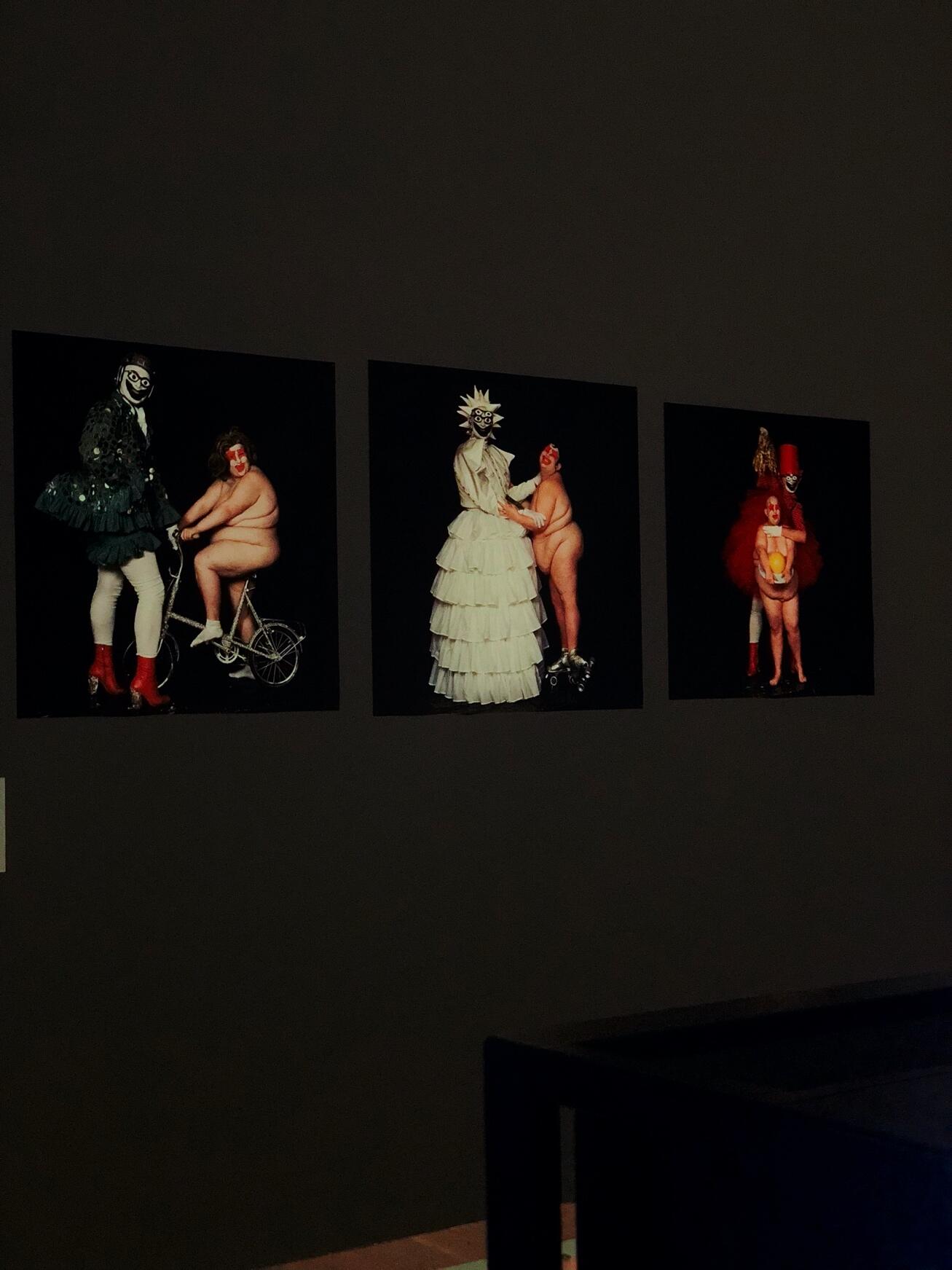‘I believe that fashion (where all the girls have clear skins, blue eyes, blond blow-waved ha and a size ten figure and where all the man have clear skins, moustaches, short blow-waved hair and masculine physique and appearance) STINKS’ – Leigh Bowery (Tilley 1997, p. 97).
Everything was surprising and unsurprising at the same time in the Still Undead exhibition at Nottingham Contemporary. Traveling from one piece of art to another, one could not ignore both the colour and the darkness of some of the exhibits as well as their startling and transparently allegorical features. When stumbling upon the set of photographs made by Robyn Beeche, it was impossible to mistake the subjects of the images for none other than Leigh Bowery.
The three photos are located in a row as if telling a story; however, despite having a connection, there really is no rhyme or reason to what Bowery and his performing partner, Fat Gill, were trying to convey. Thus, the current exploration will focus on discussion art for the purpose of art as a philosophy that challenges social conventions, promotes openness to ideas, and encourages its viewers to have some fun (Gompertz 2019).

The series of photos is located in a dimly-lit section of the exhibition, with its overall tone being a bit worrying and pressuring at a first expression. The emphasis on the experimentation of colours, textures, and materials presented in the images on Beeche’s photographs, on the other hand, strikes viewers with their carelessness despite the immaculate posing of the subjects. Bowery, wearing intricately adorned outfits, is posing next to his collaborator, wearing only makeup and nothing else. The juxtaposition of the characters creates a contrast that is nothing like the rest of the art pieces seen at the gallery. The silly star-eyed makeup of the nude model is juxtaposed to the harsh lines of Bowery’s outfit and his mask-like face art.
For some, the subject matter of the images may seem as taboo; however, everything that Bowery had done for art was a commentary on mundane life and a joke about appearance (Healy 2014). The photos encourage people to look at the positive side of life and to stop condemning others on how they look or act. There is also a narrative of body positivity that is only becoming popular today – the heroes of Robyn Beeche laugh at themselves and laugh at the society for being so uptight and conventional. Because of this, Bowery manipulates his clothing in the series of photos to change his appearance but remain recognisable among the uniformity and blandness (Sharkey 1987).
The Bauhaus club culture radiates from the set of photographs as the fashion illustrated in them was not created to be worn outside or even seen in the light of day, nor was it intended for being mass consumed (Thornton 1995). The uncanny nature of Leigh’s clothing design was both appealing and repulsive to those failing to understand the true purpose of Bowery’s art – creating something that has no resemblance to anything else (Papermag 2005). For him, regular fashion was boring, which is why it was so important to elevate individuality and erase any rules for opinion and behaviour. Thus, we should all take ourselves a little less seriously and learn from the greatest Bowery as captured by Robyn Beeche.
Reference List
Gompertz, W 2019, ‘Still undead: Will Gompertz reviews the Bauhaus show in Nottingham’, BBC, Web.
Healy, R 2014, ‘Taboo or not taboo, the fashions of Leigh Bowery’, NGV, Web.
Papermag 2005, Leigh Bowery by Boy George, Web.
Sharkey, A 1987, ‘The undiluted Leigh Bowery’, i-D, no. 42, June, p. 63.
Thornton, S 1995, Club cultures, Cambridge, Polity Press.
Tilley, S 1997, Leigh Bowery – life & times of an icon: the life and times of an icon, London, Hodder & Stoughton.